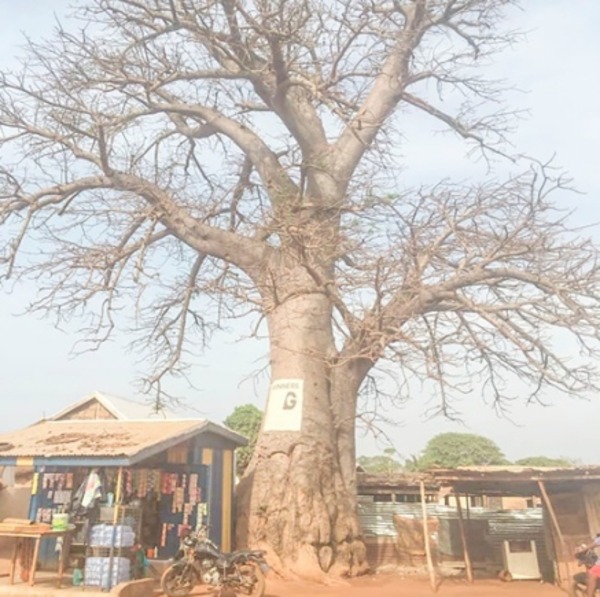Called “Naa Binbiegu Tua”, the tree was named after a former Overlord of Dagbon, Zangina Zuu Jinjli, who reigned between 1687-1700 and is believed to be the most unattractive Ya-Na in the history of Dagbon.
The 332-year-old tree used to serve as a sacred place where Naa Binbiegu mounted his gods and idols for sacrifices and libations for the Dagbon Kingdom.
Motive
History has it that the motive behind the name of the tree was due to the unattractive nature of the chief and his struggle to ascend to the Dagbon throne. As the eldest son of Naa Zangina, a former Overlord of Dagbon, he was expected to be the regent after the demise of his father and oversee the performance of his funeral.
After the demise of his father, Naa Binbiegu consulted elders of Dagbon and family members to perform the funeral rites of his late father, which brought to light a new Overlord, Naa Andani Sigli.
However, he was not compensated with any chieftaincy role or title after serving as the regent of Dagbon due to his supposed looks. According to historians, when Naa Andani Sigli passed on, people started teasing Naa Binbiegu, asking him to put on the chieftaincy regalia and crown himself as the Ya-Na.
He was forcefully adorned with the chieftaincy regalia by the princesses who sang tunes of Damba, and he danced back and forth, finally moving into the Gbewa Palace. The chief drummers sang appellations to Naa Binbiegu, such as “Naa Binbiegu Yi polo ku lahi sogu” which literally means, your ugliness has come to light and can no longer hide.
This event on that day signified the installation of Naa Binbiegu as the next Ya-Na and the predecessor of Naa Andani Sigli. His reign lasted for 13 years.
Tourism potential
The tree has since been preserved as sacred for its cultural and historical importance. However, the site has not been developed to tap its full tourism potential. Currently, the tree, situated in the heart of the town, has been left bare with not even a signpost mounted for easy identification. Instead, under its giant branches, shops are being put up.
In an interview with the Daily Graphic, a Traditional Historian, Yakubu Zakaria Tia, said the struggle of Naa Binbiegu to the Dagbon skin was worth noting in the history of the kingdom.
“We are told it was because of his unattractive looks that he was not compensated with any chieftaincy role after serving as the Regent of Dagbon. “In the history of Dagbon, he is the only regent who has not been compensated before with any title,” he said.
He explained that there would have been a problem if the kingmakers had not accepted Naa Binbiegu and installed him as the next Overlord of Dagbon after he went through the traditional ritual because it would have been an abomination.
Mr Tia said that if the site was well-developed, it could become a popular tourist centre because it was named after a prominent person and people would like to know the history behind it.
He, therefore, called on the Ghana Tourism Authority, traditional leaders and other relevant stakeholders to preserve and develop the site to attract tourists to the area.
Residents
A Resident of Yendi, Mohammed Abdul Rahaman, said although he was aware of the history of the tree, much had not been done to protect it for future generations. He said as it was believed to be a powerful tree, people had been going there to offer prayers and sacrifices.
“I have ever offered prayers at the tree and all my wishes were granted,” he claimed. Another resident, Yakubu Musah, appealed for the protection of the tree to preserve history and tradition.
History has it that after the death of Naa Binbiegu, people made offerings to the tree for their wishes to be granted.
Even now, some people still believe in the tree’s powers and visit it to offer prayers and make sacrifices.
ALSO READ:

